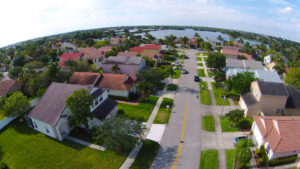In recent years the media has given stucco some negative press. Now contrary to what they say, stucco can be a great cladding material. Stucco is 
One of the reasons that stucco has had such a bad reputation stems from an abundance of installation deficiencies during the stucco construction boom from the 1990s. This caused many homes to leak.
Stucco is a porous limestone building compound that is made up of Type I & Type II Portland Cement. It is designed to absorb water, making it flexible and durable to weathering elements. Since water passes through stucco with such ease, it is crucial to pay close attention to water management.
Typically, houses are framed with wood. In order to protect this wood framing from rot, stucco homes have 2 layers of a Weather Resistant Barrier, covered with 3 layers of stucco (scratch coat, brown coat, and top coat). These 3 layers of stucco provide maximum protection and resistance to cracking.
Due to the extreme weather swings, wood expands and contracts frequently, this causes gaps around windows, doors, and other openings in the stucco. In order to bridge these gaps, builders will install flashing around all of the edges as a way to protect the underlying home structure even during cold temperatures.
Most of the systems installed consist of only 2 layers of stucco with only one layer of Weather Resistant Barrier. It has been found that over 50% of the leaks in homes came from improperly flashed windows. Whereas 30% of the leaks in the homes were caused by a lack of flashing details known as “kick out diverters.” Kick out diverters are installed on roof/wall intersections as a way to push rainwater out and into the gutter and away from walls.

Unfortunately, due to improper flashing techniques, installation of the underlying Weather Resistant Barrier, lack of communication among the trades, and lackluster inspections by local municipalities, many of the homes that were built during the 1990s have been leaking and are in poor condition. This deterioration of improperly covered stucco homes has led to relocation companies and some appraisers requiring testing of all homes with stucco systems.
Stucco homes can be a great material for your home. Just like any other home material there are pros and cons, but having some type of understanding of this product is very necessary. We hope this explanation of stucco can help you make an informed decision about buying or selling a stucco home. If you have any questions or concerns when it comes to a stucco home we are happy to assist you in any way. Contact us at CDP Stucco.

